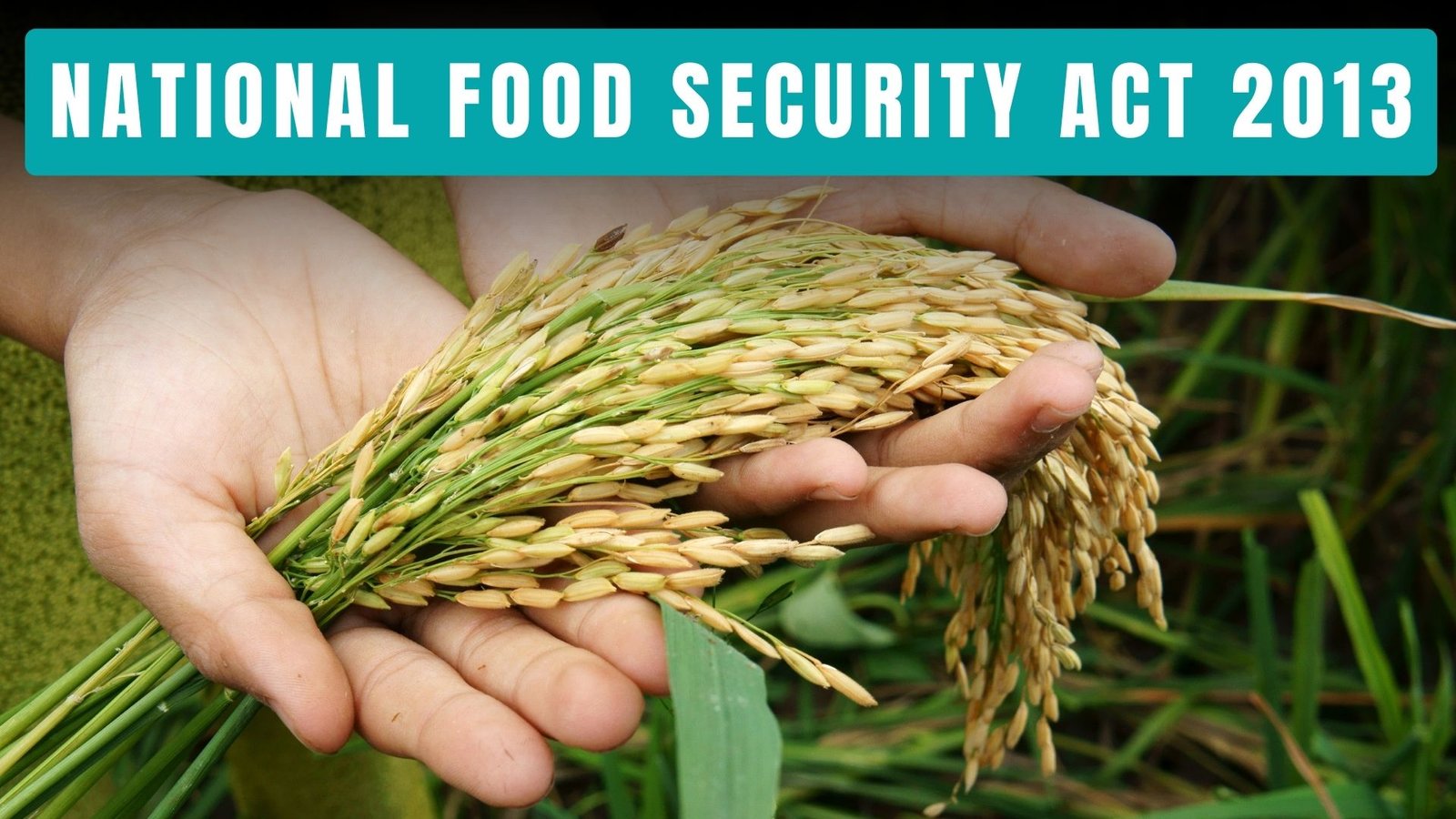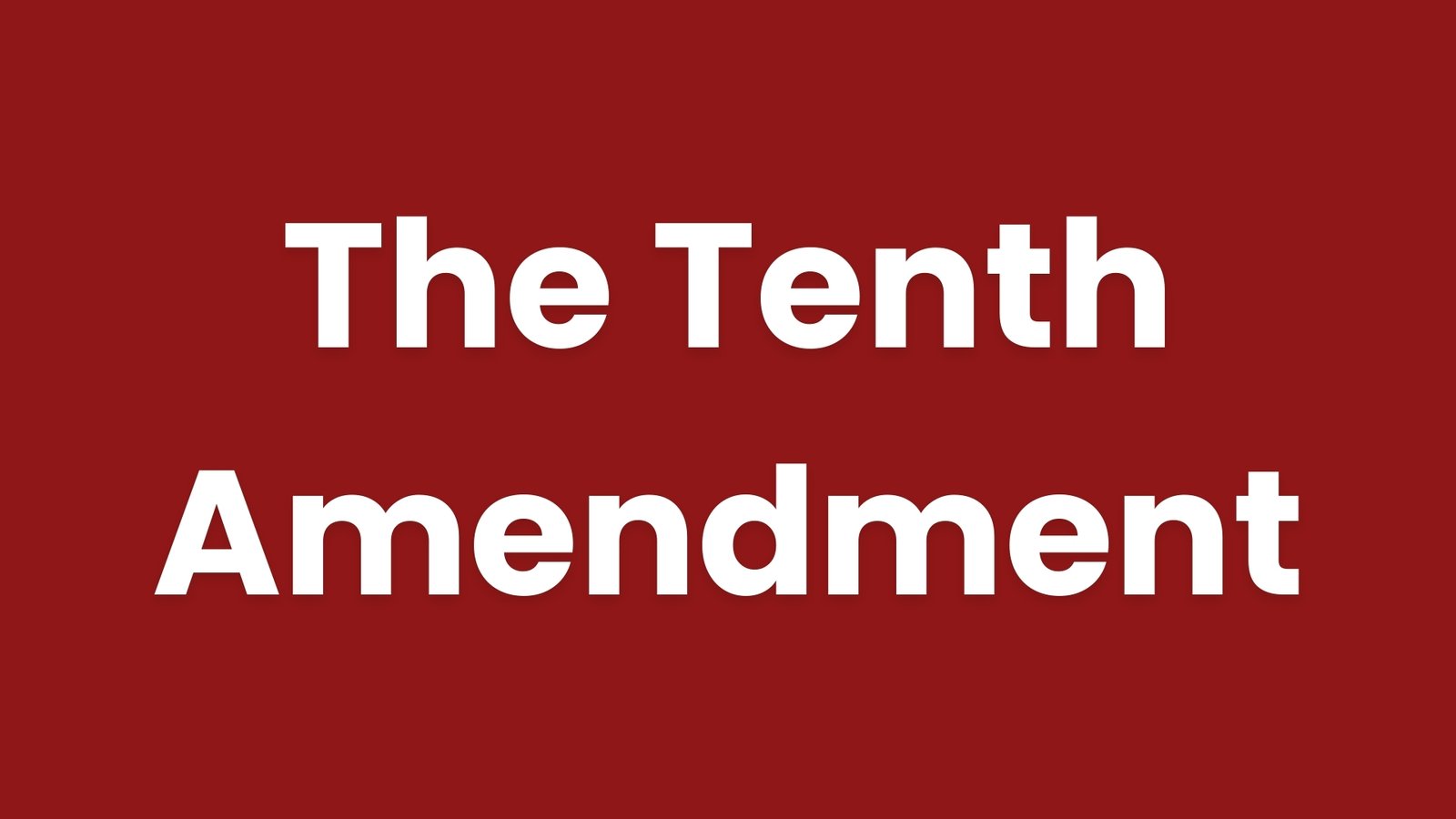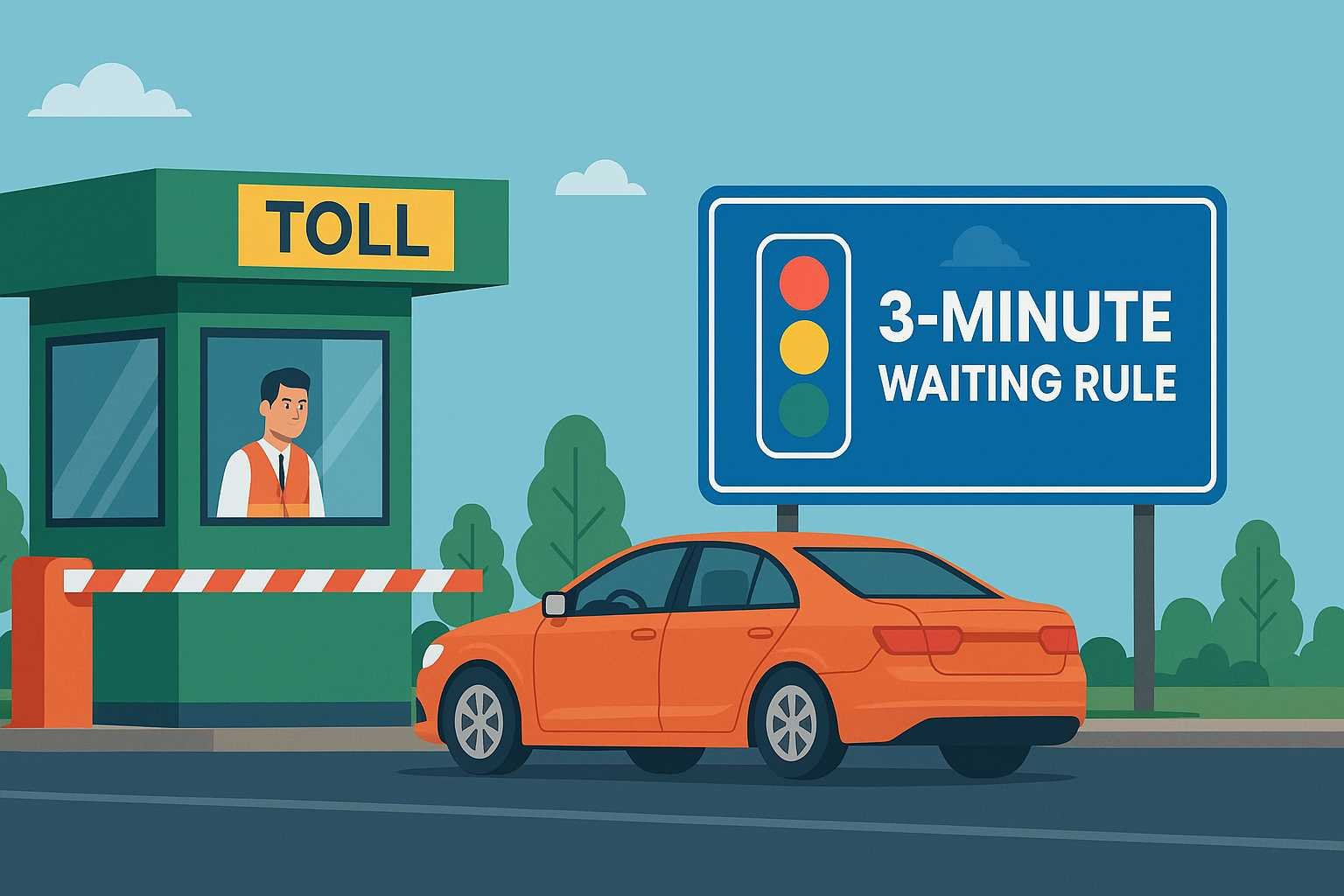On this page you will read detailed information about National Food Security Act 2013.
As citizens of this country, we have a right to food security. This act aims to provide subsidized food grains to approximately two-thirds of our population. Its purpose is multifold – to enhance food security, uplift nutritional levels, and strengthen the public distribution system. While progress has been made on numerous fronts since its inception in 2013, myriad challenges remain in achieving the intended outcomes. Assessing the impact of the NFSA is crucial to understand where we currently stand, how far we have come, and what still needs to be done to accomplish the vision of a hunger-free nation. In this article, we will analyze the objectives, developments and limitations of this ambitious legislation.
Understanding the National Food Security Act 2013 (NFSA)
The National Food Security Act (NFSA), launched in 2013, aims to provide subsidized food grains to nearly two-thirds of India’s population. The ambitious act intends to guarantee basic nutritional security to the poor through the Public Distribution System (PDS).
Objectives
The primary objectives of the NFSA are:
- Providing 5 kg of food grains per person per month at subsidized prices of Rs. 3/2/1 per kg for rice/wheat/millets.
- Coverage of up to 75% of the rural population and 50% of the urban population for receiving subsidized food grains under Targeted Public Distribution System (TPDS).
- Special focus on the poorest of the poor households.
- Improving the nutritional status of women and children.
Progress and Impact
Since its implementation, the NFSA has made reasonable progress in achieving its goals:
- It has reached about 80% of the intended beneficiaries as per the Socio Economic and Caste Census 2011.
- It has improved calorie intake and reduced malnutrition, especially in women and children from vulnerable sections.
- It has reduced the burden on household budgets for food expenditures.
- It has minimized the scope of leakages and improved targeting efficiency.
- However, issues like poor quality of grains, irregular supply, inclusion, and exclusion errors persist in some pockets.
Challenges
Some significant challenges include:
- Limitations of budgetary allocations vis-à-vis the ambitious goals.
- Issues of leakages and targeting efficiency owing to the large scale of operations.
- Grievance redressal and ensuring transparency and accountability at all levels of implementation.
- Ensuring good quality grains and regular supply in all regions.
- Widening the scope of millets and pulses under the NFSA.
To summarize, the NFSA intends to achieve the vision of a hunger-free India. Reasonable success has been achieved, but consistent efforts are required to overcome the challenges in fulfilling its noble goals and making it a model for other nations.
In the previous post, we had shared information about Secularism and the Indian Constitution: An Analysis, so read that post also.
Key Objectives and Provisions of the NFSA
The National Food Security Act (NFSA) was enacted in 2013 to provide food and nutritional security to the poor in India. It aims to ensure access to adequate quantity of quality food at affordable prices for people to live a life with dignity.
Objectives
The key objectives of NFSA are:
- Provide subsidized foodgrains (rice, wheat, coarse grains) to nearly two thirds of India’s population.
- Improve nutritional intake and public health.
- Empower women and promote gender equality. Women are regarded as the head of the household for the purpose of issuing ration cards.
- Strengthen the Public Distribution System (PDS) for effective distribution of foodgrains.
- Enhance agriculture production and productivity.
Provisions
The major provisions in the Act are:
- Coverage of up to 75% of the rural and 50% of the urban population for receiving subsidized foodgrains under Targeted Public Distribution System (TPDS).
- Entitlement of 5 kg of foodgrains per person per month at subsidized prices of Rs. 3/2/1 per kg for rice/wheat/coarse grains for priority households.
- Classification of population into priority and non-priority groups with differentiated entitlements.
- Doorstep delivery of foodgrains.
- End-to-end computerization for transparency and efficiency.
- Grievance redressal mechanism and vigilance committees at state, district and block levels.
- Cost sharing between center and states. The central government will provide foodgrains while transportation and distribution costs will be shared.
- Accountability of functionaries and penalty on diversion or misuse of funds/foodgrains.
- Social audits and setting up of State Food Commissions.
The NFSA aims to provide Indians access to nutritious and adequate food. However, there are challenges in its effective implementation due to issues like foodgrain shortages, poor logistics, and leakages. Addressing these challenges through political will and administrative efficiency can help in achieving food security for all.
Progress So Far: PDS Reforms Under the NFSA
The NFSA aimed to reform and strengthen the Public Distribution System (PDS) to improve access to subsidized food grains for vulnerable sections of the population. Some of the key reforms under the NFSA include:
Expansion of Beneficiary Coverage
The NFSA increased coverage of the Targeted Public Distribution System (TPDS) to up to 75% of the rural population and up to 50% of the urban population. This expansion increased the number of beneficiaries under the TPDS from 6.52 crore to 8.30 crore households. The increase in coverage has helped provide subsidized food grains to more marginalized and economically disadvantaged groups.
Introduction of Food Security Allowance
The NFSA introduced a Food Security Allowance for beneficiaries in case of non-supply of entitled food grains. This allowance is paid to beneficiaries to compensate for any loss due to issues like insufficient supply at Fair Price Shops. The allowance helps ensure that beneficiaries are not deprived of their legal entitlements due to systemic inefficiencies.
Grievance Redressal Mechanism
The NFSA also put in place a grievance redressal mechanism at the district and state levels to address complaints regarding the implementation of the Act. The grievance cells are required to dispose of complaints within 30 days and take necessary action against erring officials. The mechanism aims to make the PDS more transparent and accountable to beneficiaries.
Digitization and Aadhaar Linkage
The government has started digitizing ration cards and linking them with Aadhaar numbers to weed out duplicate or fake ration cards. Aadhaar linkage can help reduce leakages and diversions by enabling the government to directly transfer benefits to beneficiaries. However, there have also been concerns about exclusion of vulnerable groups due to mandatory Aadhaar linkage.
While the NFSA has strengthened the PDS through various reforms, issues like leakages, lack of awareness about entitlements and inadequate coverage of vulnerable groups continue to pose challenges. Continuous monitoring and grievance redressal are required to achieve the objectives of the Act.
Assessing Performance on Hunger and Malnutrition
The NFSA aims to provide food and nutritional security to the most vulnerable sections of society. Two key indicators for evaluating the Act’s performance in addressing hunger and malnutrition are:
Coverage of Beneficiaries
The NFSA covers nearly two-thirds of India’s population under the Targeted Public Distribution System (TPDS). However, there are still issues with inclusion and exclusion errors, preventing some needy individuals from receiving benefits. Surveys show ration card coverage varies significantly across states. Expanding coverage to uncovered vulnerable groups and improving targeting mechanisms should be a priority.
Improvement in Nutritional Outcomes
The NFSA provides highly subsidized staples like rice, wheat, and coarse grains to beneficiaries. While this has helped reduce hunger, there are concerns about the nutritional adequacy of the food basket. Malnutrition, especially among women and children, remains high. Anemia affects over half of women and children. Stunting affects 38% of children under 5.
Some steps that may help improve nutritional outcomes include:
- Providing millets, pulses and fortified foods in addition to staples. These provide more nutrients like protein, iron and zinc.
- Distributing nutrition packets for pregnant and lactating women, and children under 3. These provide essential nutrients often lacking in their diets.
- Conducting nutrition education and awareness campaigns. Educating people about balanced diets, hygiene and feeding practices can help maximize the nutritional impact of subsidized foods.
- Improving the grievance redressal mechanism. Making it easier for beneficiaries to provide feedback on issues like poor food quality or quantity can help identify and fix problems.
While the NFSA has helped reduce hunger, continued efforts are needed to improve coverage, reduce inclusion and exclusion errors, and enhance the nutritional impacts of the program. Tackling malnutrition requires a multi-pronged approach including providing nutritious food, raising awareness, and enabling access to healthcare and sanitation. The NFSA must evolve to keep pace with these needs.
Challenges in Implementation of NFSA
Implementing NFSA across India’s vast and diverse landscape has posed several difficulties. Two of the major challenges faced are:
- Inadequate budgetary allocations: The NFSA requires massive investments to strengthen the existing Public Distribution System (PDS) infrastructure and delivery mechanisms. However, budgetary allocations have been insufficient to meet these demands. According to some estimates, the central government needs to allocate nearly INR 2.5 trillion ($38 billion) annually to implement NFSA. The actual budgetary allocations have fallen short of this amount, impacting the scale and effectiveness of NFSA.
- Issues in identifying beneficiaries: Accurately identifying eligible households has been problematic, given the scale of the program. NFSA aims to cover nearly two-thirds of the population, including marginalized groups. Verifying incomes and identifying beneficiaries across states has been an uphill task. Some households have been wrongly excluded while non-eligible households have been included. This has reduced the intended benefits to genuinely needy households.
To address these challenges and strengthen NFSA, the following steps could be considered:
- Increase budgetary allocations to match the requirements of NFSA: Additional funds are needed to strengthen delivery infrastructure, provide subsidized foodgrains, and meet administrative costs.
- Improve beneficiary identification mechanisms: Technology-enabled solutions like Aadhaar and socio-economic surveys can help verify incomes and automatically enroll eligible households. Community participation in beneficiary selection can also help address exclusion errors.
- Strengthen grievance redressal mechanisms: Robust mechanisms are needed at local, district and state levels to address complaints related to non-selection, quantity and quality of foodgrains in a timely manner.
- Improve coordination between agencies; Close coordination between central and state agencies as well as district administrations can help in effective implementation and monitoring of the program.
By addressing these challenges, the government can strengthen NFSA to achieve its objective of providing subsidized foodgrains to the underprivileged and needy sections of the society. Continuous monitoring and periodic evaluations are also needed to assess the impact and make necessary improvements to the program.
Recommendations for More Effective Implementation
To strengthen the impact and reach of the NFSA, the following recommendations aim to address key challenges and leverage opportunities:
Improved targeting of beneficiaries
The NFSA aims to provide subsidized food grains to nearly two-thirds of India’s population. However, issues with beneficiary identification have led to inclusion and exclusion errors.
- Update the Socio-Economic Caste Census (SECC) data more frequently to accurately determine eligibility. The current SECC data is from 2011.
- Use technology like data analytics and machine learning to compare information from various databases and verify beneficiary details. This can reduce duplication and prevent ineligible households from availing benefits.
- Increase door-to-door surveys to identify vulnerable households that may have been left out. Community participation in beneficiary selection can also help minimize exclusion errors.
Enhanced focus on nutrition
While the NFSA has enhanced availability of cereals, nutrition remains a concern. A few initiatives could help address this:
- Provide nutritious food baskets with lentils, eggs, fruits and vegetables in addition to grains. Local crops and recipes can be promoted.
- Include nutrition education and counseling as part of the program. Behavior change communication using social media and community outreach can influence dietary choices and habits.
- Fortify staples like rice, wheat and oil with micronutrients to tackle malnutrition. Partnerships with private food processors and manufacturers can support such fortification initiatives.
Improved program delivery and monitoring
Grievance redressal mechanisms need to be strengthened by increasing availability of helplines and online portals. Dashboards that provide data on program outcomes and beneficiary feedback in real time can enhance transparency and accountability. An improved monitoring system will help identify bottlenecks and necessary course corrections to achieve the NFSA’s objectives.
With political will, community participation and optimal use of resources, the NFSA has the potential to fulfill its promise of providing food security and nutrition to all. Continuous assessments and evidence-based reforms can help build an even more robust program that leaves no one behind.
The Road Ahead: Achieving Food Security for All
With the implementation of the NFSA, India has taken an important first step towards achieving food security for all its citizens. However, significant challenges remain to fully realize this goal.
Expanding coverage
While the PDS provides subsidized grains to nearly two-thirds of the population, many vulnerable groups still struggle with hunger and malnutrition. The government should consider expanding coverage to certain occupational categories like migrant workers, as well as marginalized groups such as tribal populations. This could help lift many of the poorest citizens out of hunger.
Improving distribution
Despite reforms, issues with the PDS like leakages, diversion, and poor quality of grains persist. The use of technology like biometrics, GPS, and SMS can help reduce leakages, while decentralizing distribution to fair price shops and doorstep delivery may improve access for beneficiaries. Storage facilities also need improvement to minimize spoilage and wastage.
Diversifying the food basket
The current focus on cereals does not provide a nutritionally complete diet. The NFSA should incorporate additional nutritious foods like pulses, oil, eggs, and vegetables. This could help address nutritional deficiencies and improve health outcomes, especially among women and children. The government may need to provide additional subsidies to make these items affordable and accessible.
Monitoring and accountability
Robust monitoring mechanisms are essential to identify and address issues in program implementation. Social audits, grievance redressal systems and a national helpline can strengthen transparency and accountability. Independent evaluations of the NFSA’s impact and reach are also needed to make evidence-based policy decisions.
With political will and continuous reforms, the NFSA can achieve its noble goal of providing food security for all. But much work remains to overcome challenges, expand coverage, improve distribution, diversify the food basket, enhance monitoring and make the program more accountable to the people it aims to serve. By building on the progress made so far, India can fulfill its promise of freedom from hunger and malnutrition.
State-Wise Analysis of NFSA Performance
A state-wise analysis of the National Food Security Act (NFSA) provides insights into the progress and challenges in implementing the Act.
Some states have successfully achieved most of the objectives set out in the NFSA. Tamil Nadu, for example, has nearly achieved universal coverage by providing subsidized food grains to 89% of its rural population and 95% of its urban population. Similarly, Chhattisgarh has reached over 80% coverage in both rural and urban areas. These states have streamlined the identification of eligible households and the distribution of food grains.
However, certain states are still struggling to meet the NFSA targets. According to a survey in Bihar, only 55% of eligible households have received ration cards to avail benefits under the NFSA. In Uttar Pradesh, nearly a quarter of the population has not yet received ration cards. The key challenges in these states include:
- Lack of efficiency in identifying beneficiaries: There are issues with the digitization of records and linking ration cards to Aadhaar cards. This has excluded many eligible households.
- Irregular supply of food grains: Ration shops frequently face shortages of food grains allotted under the NFSA, depriving beneficiaries of their entitled benefits.
- Diversion of funds and food grains: There are reports of large-scale diversion of funds and food grains meant for the NFSA to the open market, indicating issues with transparency and accountability.
- Grievance redressal: Many states lack effective mechanisms to address grievances of beneficiaries regarding identification, issuance of ration cards, and delivery of food grains.
To summarize, while some states have successfully implemented the NFSA, others continue to face challenges in correctly identifying beneficiaries, streamlining the supply of subsidized food grains, and ensuring transparency. Addressing these issues can help achieve the NFSA’s objective of providing food security to the most vulnerable sections of the population across all states.
FAQs on the National Food Security Act
The National Food Security Act (NFSA) aims to provide subsidized food grains to approximately two thirds of India’s population. The Act has the potential to positively impact food security and reduce malnutrition in the country, if implemented effectively.
The NFSA provides 5 kg of rice, wheat, and coarse cereals per person per month at subsidized rates of Rs 1, 2, 3 per kg, respectively, to two-thirds of the population. The eligible households are identified based on census data. The subsidized grains are distributed through the existing public distribution system (PDS) network of fair price shops (FPS).
Most states have implemented the NFSA and digitized beneficiary data and the distribution network. However, challenges like leakages in the delivery system, lack of transparency in the FPS network, and issues in identifying eligible households accurately based on self-reported data persist. According to reports, the all-India coverage of NFSA increased from 67% of the population in 2015 to 75% in 2019.
There are several challenges in implementing the NFSA effectively:
I) Difficulty in correctly identifying eligible households based on self-reported data
II) Lack of transparency and accountability in the FPS network leading to leakages
III) Inadequate coverage of vulnerable groups like migrants and homeless persons
IV) Limited awareness about entitlements and provisions among beneficiaries
Some recommendations to strengthen the NFSA include:
i) Conducting regular door-to-door surveys to validate beneficiary data
ii) Implementing biometric authentication at FPS to minimize leakages
iii) Expanding the coverage of vulnerable groups through special provisions
iv) Creating awareness about the provisions and entitlements under NFSA
v) Providing grievance redressal mechanisms and ensuring social audits
vi) Digitizing the supply chain and FPS network to enhance transparency
With concerted efforts to address these challenges, the NFSA has the potential to effectively achieve food security for millions of Indians across the country. Continuous monitoring and strengthening of the Act can help fulfill its noble vision and purpose.
With concerted efforts to address these challenges, the NFSA has the potential to effectively achieve food security for millions of Indians across the country. Continuous monitoring and strengthening of the Act can help fulfill its noble vision and purpose.
Disclaimer
The information and services on this website are not intended to and shall not be used as legal advice. You should consult a Legal Professional for any legal or solicited advice. While we have good faith and our own independent research to every information listed on the website and do our best to ensure that the data provided is accurate. However, we do not guarantee the information provided is accurate and make no representation or warranty of any kind, express or implied, regarding the accuracy, adequacy, validity, reliability, availability, or completeness of any information on the Site. UNDER NO CIRCUMSTANCES SHALL WE HAVE ANY LIABILITY TO YOU FOR ANY LOSS OR DAMAGE OF ANY KIND INCURRED AS A RESULT OR RELIANCE ON ANY INFORMATION PROVIDED ON THE SITE. YOUR USE OF THE SITE AND YOUR RELIANCE ON ANY INFORMATION ON THE SITE IS SOLELY AT YOUR OWN RISK. Comments on this website are the sole responsibility of their writers so the accuracy, completeness, veracity, honesty, factuality and politeness of comments are not guaranteed.
So friends, today we talked about National Food Security Act 2013, hope you liked our post.
If you liked the information about National Food Security Act 2013, then definitely share this article with your friends.
Knowing about laws can make you feel super smart ! If you find value in the content you may consider joining our not for profit Legal Community ! You can ask unlimited questions on WhatsApp and get answers. You can DM or send your name & number to 8208309918 on WhatsApp








